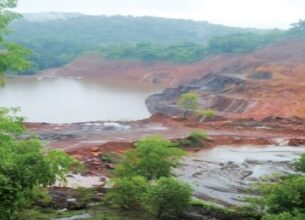Ecologically Sensitive Zones
04, Feb 2023

Prelims level : National Conservation & Mitigation
Mains level : GS-III Conservation, Environmental Pollution and Degradation, Environmental impact assessment.
Why in News?
- The National Green Tribunal (NGT) has issued directions to the Uttarakhand Government to conduct a study of the specific carrying capacity of the hill station.
What’s the issue?
- Last year a panel was formed to assess the carrying capacity of eco-sensitive zones in Shimla (Himachal Pradesh).
Key highlights:
- A nine-member committee has been formed to suggest remedial measures for preventing environmental damage to the town.
- A study on Mussoorie’s carrying capacity by the Lal Bahadur Shastri National Academy of Administration in 2001 suggested that no further construction was viable.
- An analysis of the carrying capacity of eco-sensitive areas in Himalayan regions in a holistic manner is necessary for the protection of the environment.
- Terms of reference for the committee:
- Suggest remedial measures to prevent environmental damage in the light of carrying capacity
- Hydro-geology studies
- Geo-morphological studies
- Covering other allied and incidental issues.
About Carrying Capacity:
- The total number of individuals of a species that can live in an ecosystem under certain conditions. More recently the concept has been expanded beyond ecology by including economic, social, and infrastructure imperatives.
- Urban Carrying Capacity (UCC): It provides a theoretical foundation for determining the maximum potential population that could be supported without environmental degradation, based on the inherent limitations of a city
Global Practices on Urban Carrying Capacity:
- China’s mega-cities demonstrate that the UCC framework can be simplified to quantify and evaluate indicators across sectors and use them appropriately for sustainable urban land management practices.
What are ESZ/Ecologically Fragile Areas (EFA)?
- ESZ is intended to protect ‘protected areas’ – national parks and wildlife sanctuaries – by effectively creating insulating layers around such protected areas where humans and nature can be at peace with each other.
- Objectives of creating ESZ:
- To create a shock absorber by regulating and managing the activities around protected areas. To serve as a transition zone between areas of high protection and areas of lower protection.
- Notified and regulated by: They are notified by the Union Ministry of Environment, Forest and Climate Change (MoEFCC) and regulated under the Environment Protection Act 1986 (though the EPA does not mention the word ‘ESZ’).
- Criteria to designate ESZ:
- Based on species (endemism, rarity, etc)
- Based on the ecosystem (sacred groves, frontier forests, etc)
- Based on geomorphological features (uninhabited islands, origins of rivers, etc)
- Extent of ESZ:
- An ESZ’s distribution can vary in breadth and extent. For example, the extent of ESZ from the boundary of a protected area ranges from 0 to 45.82 km (in Pin Valley National Park, HP).
- The ESZs span notified forests outside protected areas, most of which could also come under gram sabhas’ jurisdiction under the FRA.
Issues with ESZ:
Not in sync with FRA and PESA:
- The Forest Rights Act (FRA) 2006, recognises the customary and traditional rights (both individual and collective) of forest-dwellers on forest land, including inside protected areas. Under the FRA, a new category of forests called ‘community forest resource’ (CFR) has been created and has to be managed by the Gram Sabhas.
- Similarly, the Provisions of the Panchayat (Extension to Scheduled Areas) Act (PESA) 1996, empower Gram Sabhas to safeguard and preserve community resources on forest and revenue lands in Scheduled Areas.
- However, the MoEFCC has shown no inclination to amend the Indian Forest Act 1927, the Wildlife (Protection) Act and the EPA 1986 to comply with PESA and FRA.
Way Forward:
- Mining and other activities have long depleted the nation’s natural resources.
- As a result, the government’s role should not be limited to that of a “facilitator” of economic activity.
- It must strive to achieve long-term sustainable development by balancing economic development, environmental conservation and the rights of forest dwellers.







